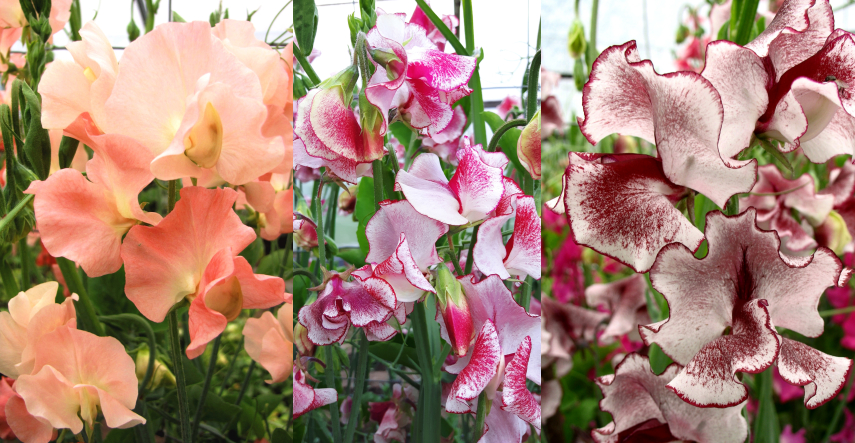The fragile and heady-scented sweet peas flower throughout the summer until, in case they've been planted late, the first autumn frosts. Mārtiņš Maltenieks, a gardener and breeder of sweet peas, spoke to LSM about the development of different varieties of the plant and the way the plant grows in the Latvian climate.
Native to the Mediterranean, sweet peas grow up to two meters long in the wild. The first written testimonies about the plant date to a 1695 book by the monk Cupani listing plants growing in Sicily. But the English were first to start breeding the plant, the seeds of which Cupani sent to England in 1699. The breed, Cupani's Original, has been preserved to the present day.
The plant was slow to be selected, as sweet peas are self-pollinating plants that cannot be crossed with related species, hence any changes to the plant had to be the result of natural mutations. Within 100 years, just seven new breeds were added.
Sweet peas arrived in the late 19th century when the UK started selling seeds. Even though the climes are different, sweet peas grow quickly and flower for a long time in Latvia. These plants prefer warm and dry places with sufficient lighting. Heavy rain and hail can damage its brittle flowers. Buds are liable to fall off if the daytime and nighttime temperatures are radically different.
The wild sweet pea has dark brown and violet flowers, but they've been selected throughout the years to have any color except bright yellow, blue and green.
A series of plant wonders
Latvians like to think they are more in tune with the seasons than most. With that in mind, we'll be guiding you through the next few months with this series on the plants you can encounter from autumn onwards.
Mārtiņš Maltenieks became interested in sweet peas working with his late colleague Valdis Dubovskis at the Salaspils Botanical Garden. The two are the only people to have selected sweet peas in Latvia, with more than 20 varieties under Malteineks' belt. He is the owner of the largest collection of sweet pea flowers in the Baltics.
It takes about eight years to create a new variety. Maltenieks has named his breeds for people he admired, such as Kurts for the great painter Kurts Fridrihsons and Egils for his brother. The Mirdza breed, which has vivid cream-colored flowers, stands out in that it stays in bloom for a longer time, while the salmon pink Ruta adjusts to different circumstances quite well.
Valdis Dubovskis meanwhile was the first to start selecting sweet pea plants in Latvia. He even named a variety Rīga-800 for the city's 800th anniversary. Its flowers have silvery white petals covered with reddish brown spots. Aija meanwhile has big lacy salmon pink flowers while Austra Pumpure has white flowers lined with a soft pink edge.





























